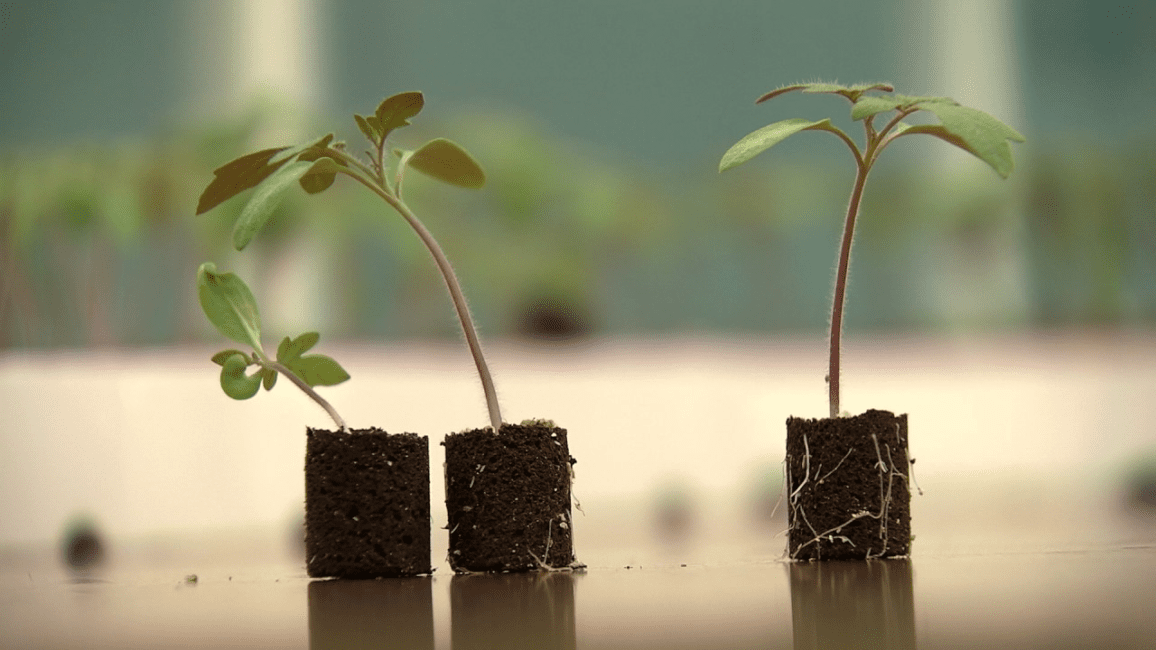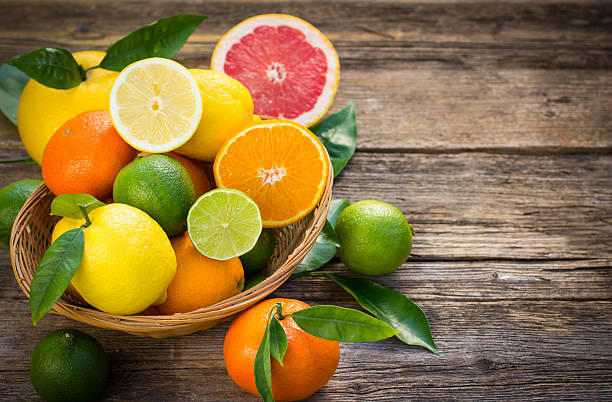This article provides specific details about citrus production, covering all members of the Citrus genus. Citrus species are primarily grown for their juice and are consumed locally. They are rich in vitamin C.
In Nigeria, citrus cultivation is mostly on a small scale. The industry is not yet well-organized or encouraged to fully utilize the various products from citrus fruits.
Important Citrus Species in Nigeria
1. Sweet orange – Citrus sinensis.
2. Sour orange – Citrus aurantium.
3. Lime – Citrus aurantifolium.
4. Lemon – Citrus limon.
5. King orange – Citrus sinensis x Citrus reticulata.
6. Tangerine – Citrus reticulata.
7. Grapefruit – Citrus paradisi.
8. Shaddock (pomelo) – Citrus grandis.
9. Tangelo – Citrus paradisi x Citrus reticulata (an interspecific hybrid).
Read Also: 10 Medicinal Health Benefits Of Orange (Citrus sinensis)
Site Selection
Prepare a rich, deep loamy soil for planting. However, citrus can thrive even in soils that are too shallow or poorly aerated for other tree crops. Citrus trees, though, may be damaged in soils that are slightly shallower and wetter, where other trees like mangoes would do well. Choose a site that is level or slightly sloping, and protect it from strong winds either naturally or with windbreaks.
Varieties
The Citrus genus includes species such as sweet orange, grapefruit, lemon, and lime. For sweet oranges, good varieties include Valencia, Washington Navel, King, Ibadan Sweet, Ogbomosho Sweet, Nigerian Green Sweet, and Tangelo. For grapefruit, varieties like Pink Marsh, Foster, Seedless March, and Thompson are recommended.
Nursery Practices
You will need to select an area with a good shelter from winds. In areas of heavy rainfall, a gently sloping ground must be preferred for free drainage. You must avoid water logging conditions. You should look for deep and well- drained soil.
Seed Bed Preparation and Sowing
Cultivate the soil deeply and apply base fertilizers such as:
1. Superphosphate: 60g/m².
2. Sulfate of ammonia: 30g/m².
3. Potash: 30g/m².
Create seedbeds about 1.2-2 meters wide and as long as needed. Raise the bed about 15cm above ground level. Be cautious with organic manure, as it may introduce diseases.
Sow citrus seeds in seed boxes or nursery beds with single seeds spaced 3 x 6 cm apart. Prick out seedlings when they reach 3 to 6 cm in height and transplant them into care baskets or polybags filled with fertile soil.
Root Stock Seed Planting

Plant seeds of the desired rootstock, typically rough lemon, or other varieties like sour orange, in rows about 25cm apart and 8cm within the row. Drill the seeds and thin them to 8cm apart later.
Mulch the seed bed with groundnut husk or other suitable materials. Water adequately, but avoid excessive moisture to prevent fungal diseases. Transplant to the budding bed about four months after sowing.
The Budding Bed
Set seedlings in rows 45cm apart and 25cm within each row. Mulch heavily with dry grass, leaving a small area around each seedling to reduce the risk of disease. Water regularly, providing each plant with about a gallon of water per week.
Apply 149g of sulfate of ammonia and 149g of muriate of potash per seedling every eight weeks. After 7-12 months, the seedlings are ready for budding.
Budding
Budding can start at the beginning or end of the rainy season but not during the peak, as disease organisms thrive in wet conditions. Budding can also be done in the dry season if irrigation is available to control water intake.
Budding should be done during the cool hours of the morning or evening at a height of 25 to 30 cm from ground level on the prepared seedling rootstock. Avoid budding during hot hours or heavy rains. Care for the budded stocks as usual until they are mature enough for field transplanting.
Popular methods of budding in citrus include:
1. Inverted “T” budding.
2. “T” or Shield budding.
3. Side budding similar to side grafting in mangoes, which has been recently discovered at IAR, Samaru, with about 75-80% success.
Transplanting
You can use two methods: the “bare-root system” or the “ball of earth” method. The “ball of earth” method is better as it reduces transplanting shock by keeping soil on the roots. If the “bare-root system” is used due to transport difficulties, dip the roots in a slurry mixture of soil, clay, and water.
Read Also: 23 Medicinal Health Benefits of Citrus latipes (Khasi Papeda)
Orchard Planting

Plant seedlings in the orchard at the start of the rainy season (May – June). Dig planting holes 1m x 1m x 75cm or as appropriate, about one week before transplanting.
Fill the hole halfway with topsoil mixed with rotten compost or organic-rich soil. Place the seedling in the hole, with one person holding it upright and another arranging the roots. Consolidate the soil around the seedling to remove air pockets.
Use adequate planting distances, typically 10m x 10m, to ensure economic productivity. Orchard planting is delicate and important, so choose careful and well-trained individuals for the task.
Fertilizer Application
Apply nitrogen, phosphorus, potassium, and magnesium. If trace elements like manganese, molybdenum, or boron are deficient as shown by foliar analysis, provide them if necessary through spraying. Use fertilizers recommended by the Federal Ministry of Agriculture and Natural Resources for your zone.
Pruning
Prune citrus trees sparingly, as excessive pruning can reduce yields. Focus on removing dead wood, overly vigorous branches, and suckers. In areas of heavy rainfall, you may need to thin dense growth to allow sunlight and wind to dry the trees, reducing infections by gummosis and foot rot fungi.
Water Requirements
Citrus trees deplete soil water year-round, so prolonged water deficits can harm tree growth and fruit setting. However, short periods of water deficit are needed for flower initiation. Even after a brief drought, oranges may not blossom until the rains begin or the orchard is irrigated.
Citrus trees tend to drop their fruits excessively due to significant daily water deficits, especially parthenocarpic fruits, e.g., Washington Navel Oranges.
Harvesting and Storage
Citrus trees start bearing fruit 3 to 5 years after planting, depending on species, variety, and propagation method. Vegetatively propagated trees bear fruit earlier than seedlings.
Citrus fruits are green when unripe and turn yellow as they mature, except for some varieties like Nigerian Green Sweet. Harvest when fruits are mature but still green, and store them at 60°F without artificial treatment. Ripe fruits should be stored at low temperatures (45°F).
Avoid bruising fruits during harvest, as this can lead to mold and foot rot, the biggest post-harvest losses. Citrus fruits are perishable after ripening, so harvest them immediately when ripe and deliver them to consumers, processors, or retailers.
If storing fruits for a short period before they reach the market, harvest them slightly before full ripening. For distant markets, harvest fruits when physiologically mature but before ripening, as they may ripen en route.
Pests and Diseases
Citrus trees are susceptible to various insects, including scale insects, aphids, mealy bugs, mites, fruit moths, and beetles. Insecticides are necessary, but use them cautiously, as persistent insecticides like DDT can harm both pests and beneficial insects.
Consult a specialist before applying chemicals to citrus trees. Citrus diseases can be caused by viruses, bacteria, fungi, algae, nematodes, and parasites. They are also prone to deficiency diseases.
Major Diseases of Citrus:
1. Tristeza: A viral disease that is preventable by using the correct stock, such as rough lemon.
2. Anthracnose: Causes leaf and twig blight and staining. Control it with copper fungicides, farm sanitation, and resistant varieties if available.
3. Scab: A fungal disease that causes whitish scabs on leaves, twigs, and fruits. Control it with farm sanitation and fungicides like Captan or Bordeaux mixture.
4. Foot rot or brown rot: Also known as citrus gummosis, caused by Phytophthora species. It kills bark on the trunk and roots, eventually killing the plant. Control it with effective fungicides.
Minor Diseases:
1. Sooty mold.
2. Algal leaf spots.
3. Mistletoe.
4. Mineral deficiencies.
However, you should be able to control most diseases especially the minor diseases since most minor diseases can be kept in check with proper farm sanitation.
In conclusion, this article provides a comprehensive guide to citrus production in Nigeria, covering key species like sweet orange, lime, lemon, and grapefruit. It discusses essential practices for successful cultivation, including site selection, nursery practices, budding, transplanting, and orchard management.
The article emphasizes the importance of proper fertilization, pruning, and water management to enhance fruit yield and quality. It also addresses common pests and diseases affecting citrus trees and offers strategies for their control. Finally, it outlines the best practices for harvesting, storing, and delivering citrus fruits to ensure minimal post-harvest losses.
Read Also: Transportation of Crop Produce and Factors that May Compromise Quality during Transportation
Read Also: Farm Estate Planning and Transition for Farmers

